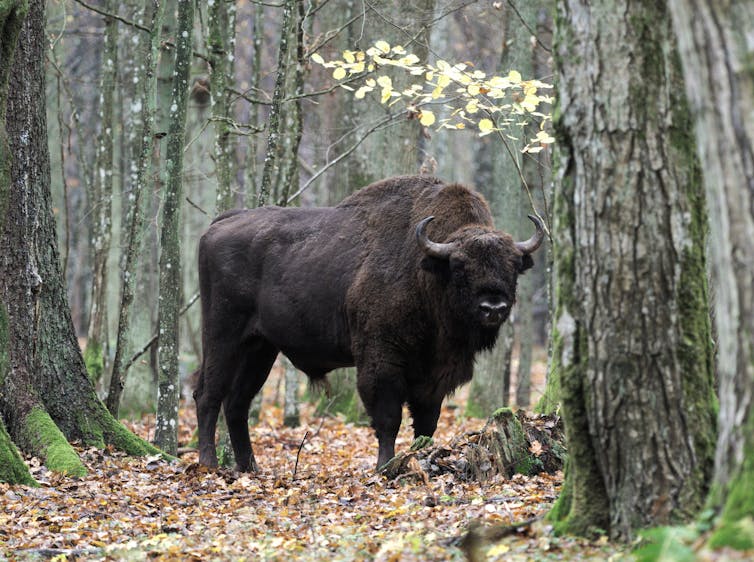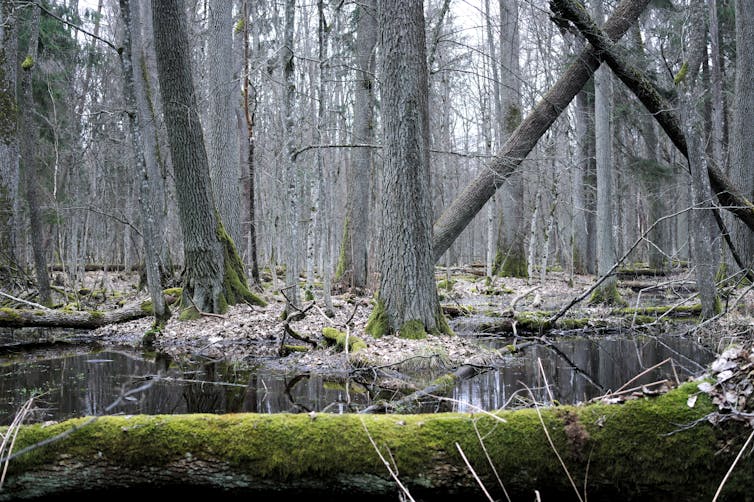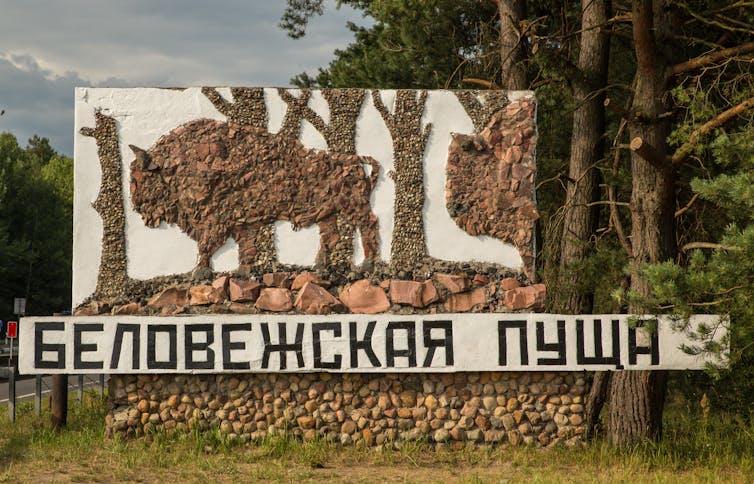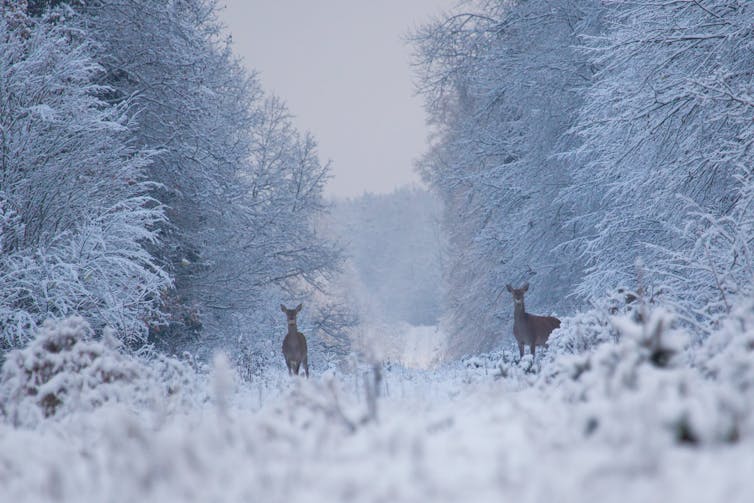Year 2021 Review: Department Of Water Resources, River Development & Ganga Rejuvenation, Ministry Of Jal Shakti
3 ஜன., 2022
Ken-Betwa Interlinking of Rivers Project:
The Union Cabinet approved the funding and implementation of Ken-Betwa inter-linking of rivers project on 8.12.2021. The total cost of Ken-Betwa link project has been assessed at Rs.44,605 crore at 2020-21 price levels. On 22nd March 2021, in presence of the Hon’ble Prime Minister, a historic agreement was signed between the Union Minister of Jal Shakti and the Chief Ministers of Madhya Pradesh and Uttar Pradesh to implement the first major centrally driven river interlinking project in the country. This agreement heralds the beginning of inter- state cooperation to implement the vision of Sh. Atal Bihari Vajpayee to carry water from areas that have surpluses to drought prone and water deficit areas, through the interlinking of rivers.
This project involves transfer of water from the Ken to the Betwa River through the construction of Daudhan Dam and a canal linking the two rivers, the Lower Orr Project, Kotha Barrage and Bina Complex Multipurpose Project. The project will provide an annual irrigation of 10.62 lakh ha, drinking water supply to a population of about 62 lakhs and also generate 103 MW of hydropower and 27 MW solar power. The Project is proposed to be implemented in 8 years with state of the art technology.
The Project will be of immense benefit to the water starved Bundelkhand region, spread across the states of MP and UP. This project will provide enormous benefits to the districts of Panna, Tikamgarh, Chhatarpur, Sagar, Damoh, Datia, Vidisha, Shivpuri and Raisen of Madhya Pradesh and Banda, Mahoba, Jhansi & Lalitpur of Uttar Pradesh.
The project is expected to boost socio-economic prosperity in the backward Bundelkhand region on account of increased agricultural activities and employment generation. It would also help in arresting distress migration from this region.
This project also comprehensively provides for environment management and safeguards. For this purpose a comprehensive landscape management plan is under finalization by Wildlife Institute of India.
Dam Safety Bill (now Act), 2021
After China and USA, India is the 3rd largest dam-owning nation in the world. Although India’s track record of dam safety is at par with that of the developed nations, there have been instances of unwarranted dam failures and of poor maintenance issues.
The landmark Dam Safety Bill was passed by the Rajya Sabha on 2nd December, 2021, paving the way for enactment of the Dam Safety Act in the country. The Dam Safety Bill (2019) was passed by the Lok Sabha on 2ndAugust 2019. The Bill provides for adequate surveillance, inspection, operation, and maintenance of all the large dams in the country so as to prevent dam failure related disasters. The Bill provides for an institutional mechanism at both Central and State levels to address structural and non-structural measures required for ensuring the safe functioning of dams.
As per the provision of the Bill, a National Committee on Dam Safety (NCDS) will be constituted to help evolve uniform dam safety policies, protocols, and procedures. The Bill also provides for the establishment of a National Dam Safety Authority (NDSA) as a regulatory body for ensuring the nationwide implementation of dam safety policies and standards. At the State level, the Bill prescribes for the constitution of State Committees on Dam Safety (SCDS) and the establishment of the State Dam Safety Organisations (SDSO).
The Dam Safety Bill also addresses in a comprehensive manner, critical concerns related to dam safety on account of emerging climate change related challenges. This Bill provides for regular inspection and hazard classification of dams. It also provides for drawing up of emergency action plans and comprehensive dam safety reviews by an independent panel of experts. There is provision for an emergency flood warning system to address the safety concerns of downstream inhabitants.
Through this Bill the Dam owners are required to provide resources for timely repair and maintenance of the dam structure, along with related machinery.
This Bill looks at Dam Safety holistically and provides for not only structural aspects, but also operational and maintenance efficacy through prescription of strict O & M protocols.
This Bill has penal provisions, involving offences and penalties, for ensuring compliance of the provisions.
Definite timelines have been provided in the Bill for the establishment of a robust institutional framework, with the support of both the Centre and the States. The Bill also focuses on implementation of mandatory dam safety actions by the dam owners within a defined timeline. The passage of this Bill heralds a new era of dam safety and water resources management in India.
Pradhan Mantri Krishi Sinchai Yojana (PMKSY)-
- Accelerated Irrigation Benefit Programmeme (AIBP)- Including CADWM:
To achieve this target schemes of the department of Water Resources, River Development and Ganga Rejuvenation like Pradhan Mantri Krishi Sinchai Yojana (PMKSY) and Atal Bhujal Yojana are ensuring targeted delivery. Under PMKSY, against the Ultimate Irrigation Potential of 76.03 Lakh ha., Irrigation potential of 63.85 Lakh ha. has been created up to 31.03.2021. 44 projects out 99 projects have been completed so far.
The Government of India on 27.7.2016 approved funding of the 99 prioritized irrigation projects (and 7 phases) with an estimated balance cost of Rs. 77,595 Crore (Central share- Rs. 31,342crore; State share- Rs. 46,253 Crore) for completion in phases. The works include both the AIBP and CAD works. Funding arrangement for both Central Assistance (CA) and State Share made through NABARD under Long Term Irrigation Fund (LTIF). Targeted Irrigation Potential to be created under the scheme is 34.63 Lakh ha. An expenditure of Rs.50437 crore (upto March 2021) has been reported to be incurred by the concerned State Governments on these projects since 2016-17.
Government of India is implementing a scheme called Command Area Development & Water Management (CADWM) under Pradhan Mantri Krishi Sinchai Yojana (PMKSY). The scheme was launched with an aim to enhance physical access of water on farm and expand cultivable area under assured irrigation. During 2016-17 to 2020-21 (upto March, 2021), CA amounting to Rs 2747.35 Crore was released to 76 projects while the CCA progress reported by States is 14.96 Lakh ha. During 2021-22 (till 28th December 2021), CA amounting to Rs 33.71 Crore has been sanctioned to 01 project.
Implementation of PMKSY AIBP (including CADWM) during 2021-26:
The Government of India has approved implementation of Pradhan Mantri Krishi Sinchayee Yojana (PMKSY) for 2021-26 with an outlay of ₹93,068 Crore on date 15-Dec-2021 to benefit about 22 Lakh farmers. The Union Cabinet has approved central support of ₹37,454 Crore to States and ₹20,434.56 Crore of debt servicing for loan availed by Government of India for irrigation development during PMKSY 2016-21.
A slew of Innovative measures and modification have been made to improve implementation and maximize benefits.
- Pradhan Mantri Krishi Sinchayi Yojana – Har Khet Ko Pani – Ground Water (PMKSY-HKKP-GW)
Pradhan Mantri Krishi Sinchayi Yojana (PMKSY) was formulated with the vision of extending the coverage of irrigation in a focused manner. Ground water component aims utilizing ground water for irrigation purpose in areas, where ground water is sufficiently available
The beneficiary under this scheme is small and marginal farmers only with priority to be given to SC/ST and Women farmers. Ground Water irrigation facility through Dug wells, Dug cum Bore wells, Tube wells and Bore wells etc. can be funded for schemes in areas categorized as SAFE and meeting the following criteria:
So far 15 projects in 12 States amounting Rs.1719 Crore were approved with Central assistance of Rs 1270 Crore. Up to 27th December’2021 Rs 458.41 Crore has been released as central Assistance to 10 States. However, Telangana and West Bengal states have not yet signed MOA for implementation of the scheme with DoWR, Ministry of Jal Shakti.
As on November’2021, more than 22500 irrigation wells have been constructed and command area of more than 37700 ha has been created, benefiting nearly 36000 small and marginal farmers.
Dam Rehabilitation and Improvement Project (DRIP) Phase II and Phase III:
India ranks third globally after China and USA with 5334 large dams in operation. About 411 dams are under construction. In addition, there are several thousand smaller dams. These dams are vital for ensuring the water security of the Country. The Union Cabinet approved externally aided DRIP Phase II and Phase III in its meeting held on October 29, 2020. 19 States and 3 Central Agencies are involved. The Budget Outlay is Rs. 10, 211 Cr. Duration of Scheme is ten (10) years, to be implemented in two phases, each of six (6) years duration with two (2) years overlap.
The Phase II of the Scheme is being co-financed by two multi-lateral funding Agencies - World Bank and Asian Infrastructure Investment Bank (AIIB). The Loan Agreement and the Project Agreements with World Bank in respect of 10 States and CWC, has been declared effective since October 12, 2021.
Central Water Commission:
CWC has conducted in-house Sedimentation Assessment Studies of 12 reservoirs using remote sensing technologies. These in-house studies have been conducted using Microwave data (instead of optical data). The advantage of using microwave data is that the images are not affected by cloud cover, and we get images of the reservoirs near FRL during monsoon season as well (which is relatively difficult with optical imageries as when the reservoir is full, most of the time it is monsoon season and it is cloudy).
The nominations were processed for 4 historical irrigation structure of India for the “World Heritage Irrigation Structure Award (WHIS)” of ICID. In 2021, India won the highest number of WHIS awards. Four reservoirs that won WHIS in 2021 are: 1) Dhukwan Weir, U.P. 2) Grand Anicut, TN, 3) Veeranam Tank, TN, and 4) Kalingarayan Anicut, TN.
The monitoring of 477 glacial lakes & water bodies having size greater than 50 ha in the Indian Himalayan region using satellite remote sensing has been completed for the year 2021. This activity is carried out every year monthly from June to October.
During the year 2021, 3 new Flood Forecasting Stations (1 Level and 2 Inflow) have been added in the States of Rajasthan and Madhya Pradesh. During the period from 1st May to 14th December 2021, 10571 flood forecasts (6670 Level and 3901 Inflow) were issued, out of which 9935 (6456 Level and 3479 Inflow) forecasts were within limit of accuracy. Daily Flood Situation Reports and Special Advisories were also issued during extreme flood situations. 314 Red and 784 Orange Bulletins were also issued and updated on hourly and 3-hourly basis respectively. All flood information were updated in FF Website, Twitter and Facebook Pages of Flood Forecasting of CWC.
Monitoring of Reservoir: Number of reservoirs under the monitoring of Central Water Commission has increased to 133. Weekly Bulletins of Live Storage Status of the Country were issued even during the COVID 19 Pandemic Lockdown without fail. Simultaneously, weekly Bulletins of Live Storage Status of the Country were also issued for Crop Weather Watch Group Meeting of Ministry of Agriculture and Farmers’ Welfare every Friday even during the COVID 19 Pandemic situation.
ATAL BHUJAL YOJANA (ATAL JAL)
In a country like India, if we wish to achieve successful implementation of any scheme, community participation is an essential condition. Towards this end, Atal Bhujal Yojana has been designed with focus on community participation and demand side interventions for sustainable ground water management in identified water stressed areas. Atal Bhujal Yojana envisages improved source sustainability for Jal Jeevan Mission, positive contribution to the Government's goal of doubling farmers’ income and inculcating behavioural changes in the community to facilitate optimal water use. Under Atal Bhujal Yojana, an amount of Rs. 109 crore has been released to the States in 2020-21.
Atal Bhujal Yojana (Atal Jal) is a Central Sector Scheme of Government of India with an outlay of Rs 6000 Crore, with focus on community participation and demand side interventions for sustainable ground water management in identified water stressed areas of seven States in the country viz. Gujarat, Haryana, Karnataka, Madhya Pradesh, Maharashtra, Rajasthan and Uttar Prasdesh. The scheme, partly funded by the World Bank, was launched by the Hon’ble Prime Minister on 25.12.2019 and is being implemented from 1.04.2020 for a period of 5 years.
Central Ground Water Board:
1. National Aquifer Mapping and Management Programme: NAQUIM studies for aquifer mapping and management plan formulation have been taken up by CGWB under the scheme Ground Water Management & Regulation. During 2021 (1st January to 30th November 2021), Aquifer Maps and Management Plans for 3.7 Lakh km2 have been prepared covering various parts of the country. So far, under the Aquifer Mapping programme, an area of 18.4 lakh km2 has been covered out of the total ~25 lakh km2 area identified for mapping in the country.
High Resolution Aquifer Mapping and Management In Arid Areas Of India:
Central Ground Water Board (CGWB), Ministry of Jal Shakti has initiated also high resolution mapping of aquifers using modern heli-borne geophysical survey in parts of the arid areas spread over the states of Rajasthan, Gujarat and Haryana. The study has been taken up in collaboration with Ministry of Science and Technology. Under phase- I of the project, the work has been initiated in nearly 1 lakh sq km. Heli-borne survey under this project was inaugurated by Shri Gajendra Singh Shekhawat, Hon’ble Minister of Jal Shakti and Dr Jitendra Singh, Hon’ble Minister of State (Independent Charge) of Science & Technology on 5th October 2021 at Jodhpur, Rajasthan.
National Water Informatics Centre:
Realizing the need for availability of reliable and up-to-date water data for efficient management of water resources of the country, the Government has recently established National Water Informatics Center as a repository of nation-wide water resources data and as a reliable system for water resources data storage, collation, management and dissemination. Data on water resources and allied themes like rainfall, river water levels and discharge, ground water levels, reservoir levels, water quality, soil moisture, etc. are disseminated through a GIS enabled public platform “india.wris.gov.in” to all stakeholders and general public.
Progress under the scheme “Irrigation Census”:
Minor Irrigation Census conducted quinquennially in order to create a sound and reliable database on groundwater and surface water minor irrigation schemes in the country. The Minor Irrigation Census is conducted under the centrally sponsored scheme “Irrigation Census” with 100% central funding through which State Statistical Cells constituted under different States/UTs are also supported. The sixth Minor Irrigation Census with reference year 2017-18 is currently under implementation where in the Ministry has also launched the first Census of Water bodies covering all water bodies in the country, both rural and urban.
Flood Management and Border Areas Programme (FMBAP)
The “Flood Management Programme (FMP)” and “River Management Activities and Works related to Border Areas" (RMBA) under operation during XII Five Year Plan were merged as "Flood Management and Border Areas Programme" (FMBAP) for the period 2017-18 to 2019-20 and further extended upto March, 2021. Since the inception of FMP, so far Central Assistance of Rs. 6447.76 Cr. has been released to Union Territories/State Governments under this programme. 415 projects completed under this Programme has given protection to an area of around 4.994 mha and protected a population of about 52.21 million.
India and Bangladesh Matters
1. India Bangladesh Water Resources Secretary Level meeting under the framework of Joint Rivers Commission held on 16th March, 2021 at New Delhi
The India-Bangladesh Water Resources Secretary level meeting under the framework of the Joint Rivers Commission was held on 16th March 2021 at New Delhi. The Indian delegation was led by Shri Pankaj Kumar, Secretary (WR,RD &GR) and the Bangladesh delegation was led by Mr. Kabir Bin Anwar, Senior Secretary, Ministry of Water Resources, Government of the People’s Republic of Bangladesh
2. India-Bangladesh 75th Joint Committee Meeting and Technical Level Meeting held on virtual platform during 5th to 6th January, 2021 & Bangladesh 76th Joint Committee Meeting held at Dhaka on 25th November, 2021
Meetings held for finalization of Annual Report on sharing of the Ganga/Ganges waters at Farakka for the lean season of the year 2020/21.
NATIONAL RIVER CONSERVATION DIRECTORATE
Cleaning of river is a continuous process and Government of India is supplementing the efforts of the State Governments in addressing the challenges of pollution of rivers by providing financial and technical assistance. Assistance is provided to State Governments for abatement of pollution in identified stretches of various rivers (excluding river Ganga and its tributaries) under the Centrally Sponsored Scheme of National River Conservation Plan (NRCP) on cost sharing basis between the Central & State Governments for taking up various pollution abatement works relating to interception & diversion of raw sewage, construction of sewerage systems, setting up of sewage treatment plants, low cost sanitation, river front/bathing ghat development, etc.
National Hydrology Project
National Hydrology Project (NHP), a Central Sector Scheme, is being implemented w.e.f. by DOWR, RD & GR on pan India basis with the support of the World Bank. The objective of the project is to improve the extent, quality, and accessibility of water resources information and to strengthen the capacity of targeted water resources professionals and management institutions in India.
In line with the defined objective, NHP is striving hard to bring transformation in the water resources sector as a whole. Moving away from the current system of decision making based on experience and judgments’, improved water management is being attempted through introduction of informed decision making, relying on a host of modern analytical tools and loads of data from automated sensors on each component of the water cycle in real-time or near real-time. The same is being done in a collaborative mode by involvement of Central and State Government Organizations to ensure proper capacity building is there and the sense of ownership prevails among the Organizations referred as Implementing Agencies (IAs) of NHP. There are 48 IAs which are taking forward this initiative spanned over a period of 8 years (from 2016-17 to 2023-24).
NATIONAL WATER MISSION:
“Catch the Rain Campaign”
“Catch the Rain” with a tagline “Catch the Rain – when it falls, where it falls” to nudge all stake-holders to create Rain Water Harvesting Structures (RWHS) suitable to the climatic conditions and sub-soil strata to catch the rains with the people’s active participation. Under this campaign drives to make water harvesting pits, rooftop RWHS, check dams, etc; removal of encroachments and de-silting of tanks to increase their storage capacity; removal of obstructions in the channels which bring water to them from the catchment areas, etc; repairs to step-wells and using defunct bore-wells to put the water back to aquifers, etc are some of the activities suggested to be taken up.
“Jal Shakti Abhiyan: Catch the Rain” campaign
Ministry of Jal Shakti has taken up the “Jal Shakti Abhiyan: Catch the Rain” (JSA:CTR) with the theme “Catch the Rain - Where it Falls When it Falls” to cover all the blocks of all districts (rural as well as urban areas) across the country druing 22nd March 2021 to 30th November 2021 - the pre-monsoon and monsoon period.
The “Jal Shakti Abhiyan: Catch The Rain” campaign was launched by the Hon’ble Prime Minister on 22 March 2021, the World Water Day, in a virtual event in which the Hon’ble PM addressed Central and State Government officers of the Department concerned, District Magistrates / District Collectors/ Deputy Commissioners of districts and Sarpanchs of Gram Panchayats through Video Conferencing. Hon’ble Prime Minister also interacted with five sarpanchs, one each from Maharashtra, Karnataka, Rajasthan, Gujarat and Uttarakhand- to discuss issues related to Water Conservation in their respective villages. On the same day the Gram Sabhas were also organized in these Gram Panchayats to take “Jal Shapath” and discuss issues related to water conservation.
Hon’ble Prime Minister wrote a letter dated 24.03.2021 addressed to all Sarpanchs in the country urging them to take steps for water conservation and play by play active role in JSA:CTR campaign and to ensure community participation. Hon’ble Prime Minister wrote a letter dated 25.03.2021 to Hon'ble Chief Ministers of states seeking their co-operation.
NATIONAL MISSION FOR CLEAN GANGA:
The government notified NMCG as an authority under EP Act, 1986 and created empowered institutions and laid down fundamental principles with a comprehensive framework for rejuvenation of rivers in Ganga Basin. This approach is now considered a model for application for rejuvenation of other rivers in the country. It integrates rivers, tributaries, wetlands, flood plains, springs and small rivers as a single system. 344 projects have been sanctioned under Namami Gange at a cost of Rs. 29,990 crores for sewerage projects, industrial pollution abatement, River front Ghats and crematoria, afforestation and biodiversity conservation, Rural sanitation and other related projects. Out of it, 147 projects have been completed and the remaining are under execution. Pace of execution has increased manifold reflected in total expenditure of Rs. 10,100 crores from 2014 till March 2021. This is more than double as compared to that from 1985-86 to 2014.
In 2021, the National Mission for Clean Ganga (NMCG) sanctioned 24 projects at a total cost of Rs 1208.77 Cr., bringing the cumulative total to 357 projects sanctioned worth Rs 30,780.18 Cr. In the same period, NMCG also completed 37 projects which resulted in the completion of total 177 projects.
With regard to sewerage infrastructure, 18 projects were completed this year. Till date, 160 sewerage infrastructure projects have been sanctioned in the Ganga Basin for the creation of 5,024 MLD treatment capacity and 5,227 km sewer network. On 25th October 2021, Hon’ble Prime Minister inaugurated the 10 MLD STP at Ramnagar, Varanasi District as well as 8 kunds in Varanasi.
Several public outreach programmes were also organized by NMCG, which included Ganga Quest, Ganga Utsav, Ganga Mashal Abhiyan, etc. - all of which received an overwhelming response. Ganga Quest 2021 saw active participation of over 11 Lakh persons from India as well as from over 113 countries. Ganga Utsav 2021, organized under the Azaadi Ka Amrit Mahotsav campaign, celebrated not just River Ganga but all other rivers in the country. It responded to the clarion call given by Hon’ble Prime Minister and laid the foundation for Nadi Utsav, wherein festivities were conducted across the country in collaboration with Ministry of Culture and Ministry of Tourism. During Ganga Utsav, NMCG also set the world record for the ‘most photos of handwritten notes uploaded to Facebook within an hour’ for the Guinness Book of World Records.










